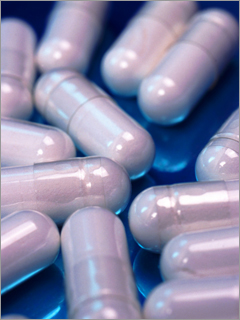24 | GRAB GENERICS Whenever you can, opt for generic drugs, which on average cost less than a third as much as their brand-name counterparts, according to the National Association of Chain Drug Stores. If you're paying retail for one prescription a month, you'll save $863 a year by going with the generic version instead of the brand name. Got drug coverage? You'll still save $13 on the average prescription co-pay, or $156 for a year's supply. And don't forget about over-the-counter medications: By sticking to the no-name store brand, you'll save $100 of the $400 that the average American spends annually on over-the-counter drugs.
25 | GO POSTAL Call your drug insurer, a.k.a. your pharmacy benefits manager, and ask if you can order your prescriptions directly from the plan. Typically you will save 15% to 35% on your monthly co-payments at the pharmacy, or nearly $90 a year on the average prescription.
26 | SPLIT 'EM UP High-dose pills are generally priced the same as their low-dose counterparts, so ask your doctor if you can safely split a higher-dosage pill in half. You'll save about $179 to $610 a year per prescription if you don't have drug coverage or 50% on your co-pays if you do.
27 | ASK FOR SAMPLES Drug companies give away tons of samples to physicians, so your doctor may be able to supply you with several weeks' worth of medication at no charge. Bonus: If you discover after a few days that the cream for your rash isn't working, you won't be left with an expensive tube of goo you can't use.
28 | SHOP MOM AND POP The federal government doesn't regulate prices on drugs sold at pharmacies, so your costs can vary widely depending on where you buy. In New York City, for example, the price for 30 tablets of the widely prescribed antidepressant Paxil recently ranged from $97 to $180 at various stores. If you live in Connecticut, Florida, Indiana, Maryland or New York, you'll find drug prices posted online at the website of your state attorney general's office (search "prescription"); otherwise, call a sampling of pharmacies in your area. The best prices are often found not only at discounters like Costco and Wal-Mart but also at drugstores that aren't part of a chain, says University of Maryland School of Pharmacy professor Bruce Stuart. "They have full authority to set their own rates because they own the place," he adds.

Pay Less for Drugs
24-28 |
|
